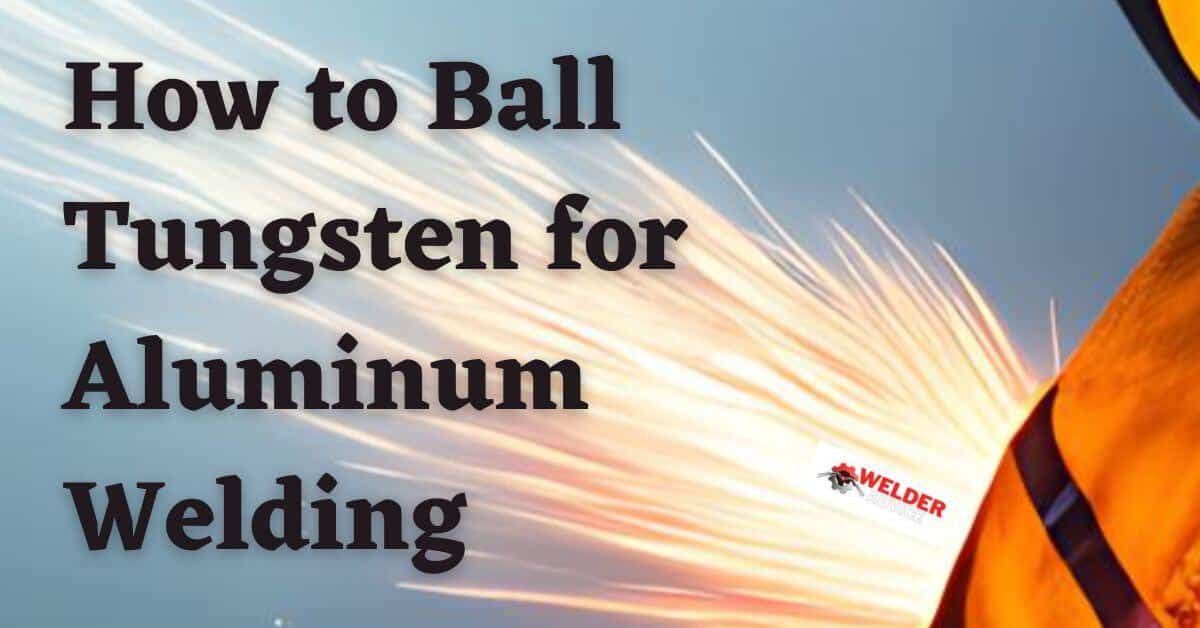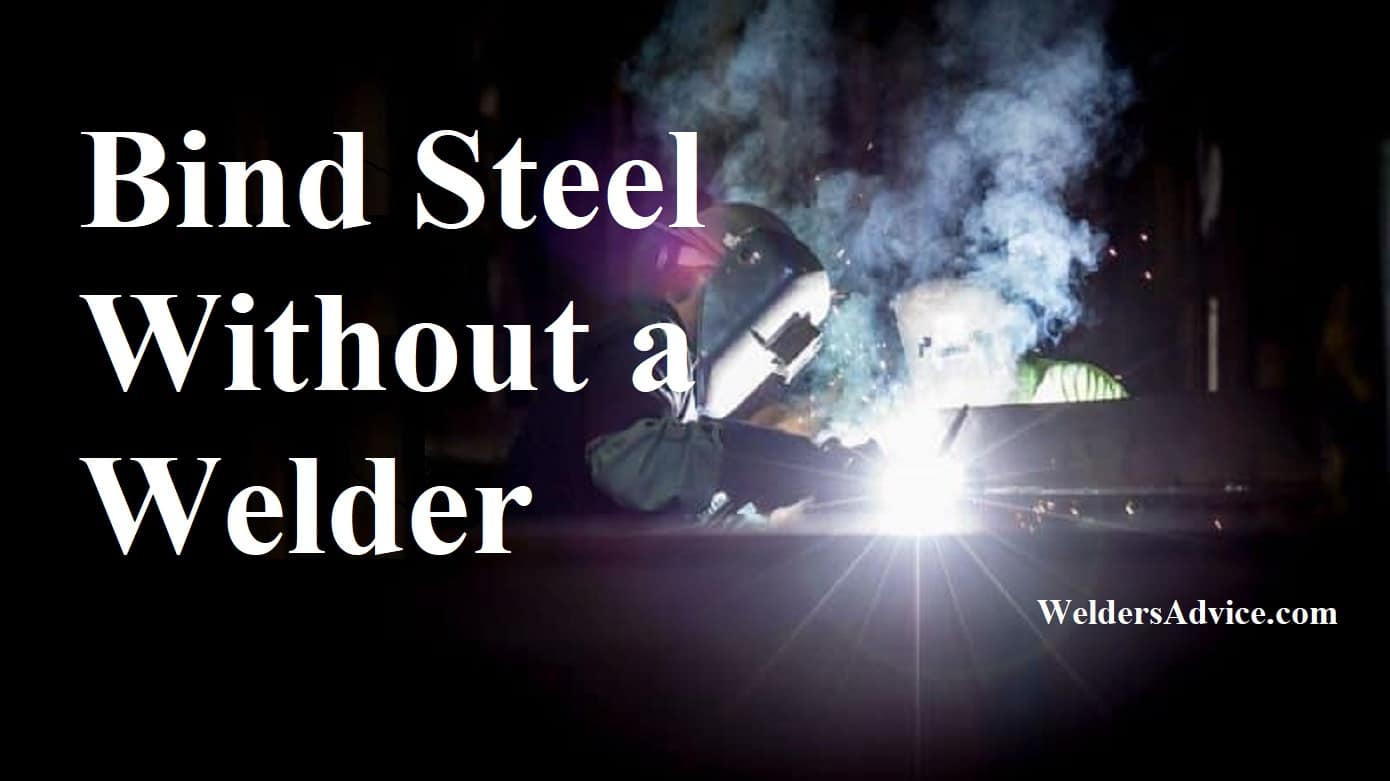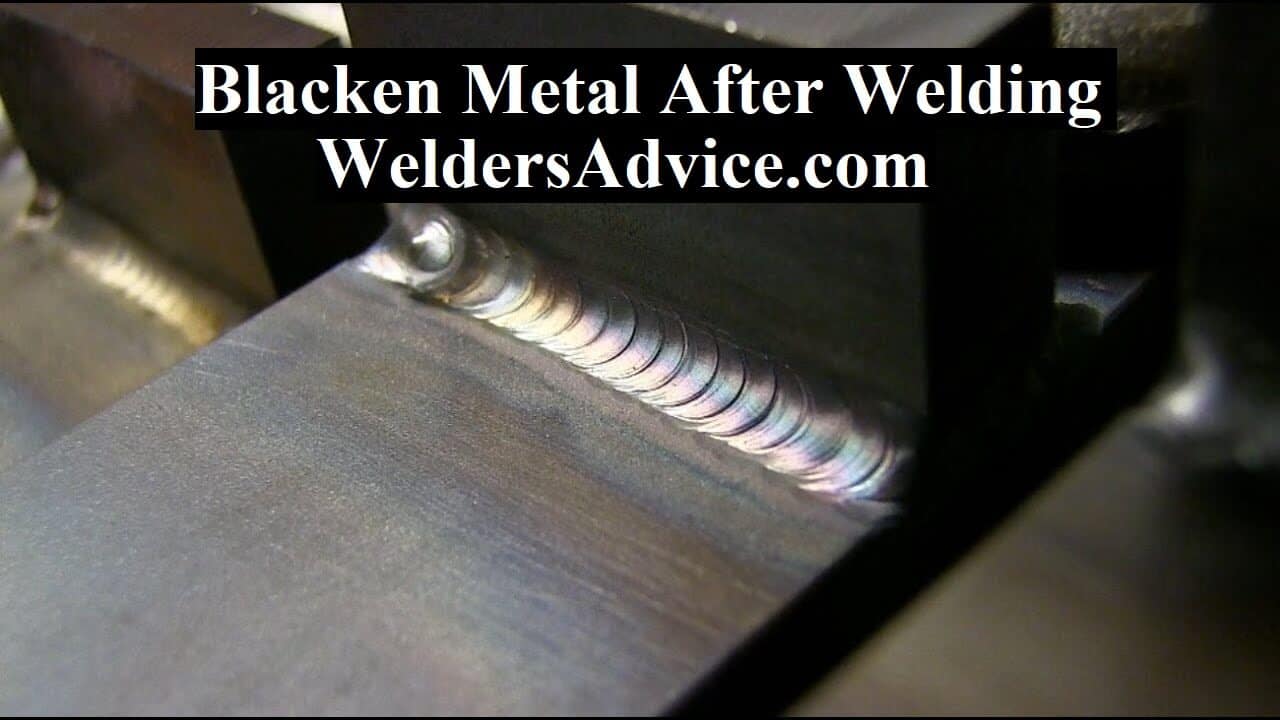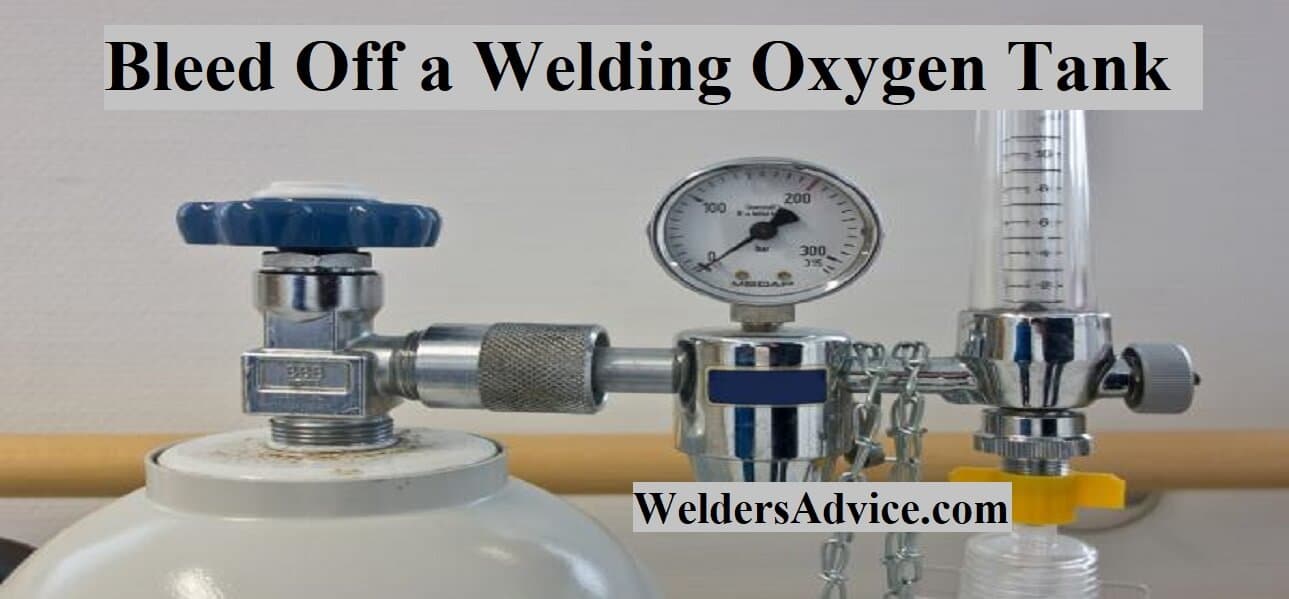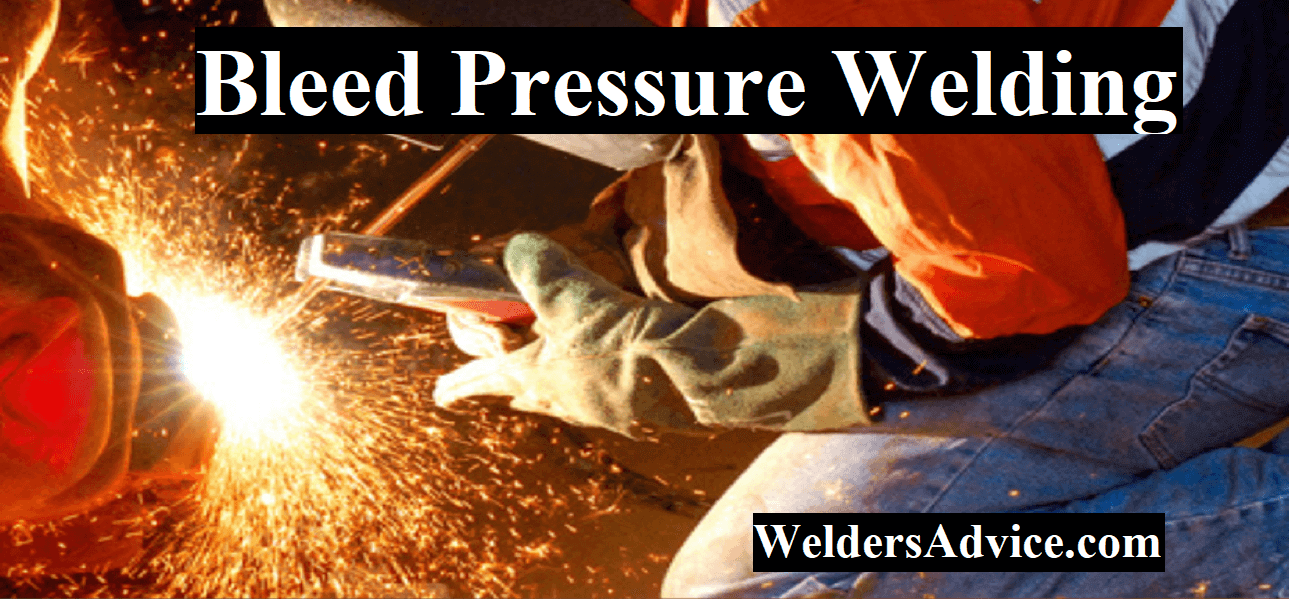Let’s get the straight answer, to ball tungsten for aluminum welding, start by selecting a tungsten electrode with an appropriate diameter and length. That is compatible with the power source. Make sure to use pure tungsten when welding aluminum. Once you have the correct size of tungsten. Prepare your work area by setting up your equipment on a non-combustible surface. Here is the step-by-step instruction about How to Ball Tungsten for Aluminum Welding.
- How to Ball Tungsten for Aluminum Welding
- What Color Tungsten for Aluminum
- Tungsten Grind Angle for Aluminum
- Tungsten Balling Up on Ac
- What Tungsten for Aluminum
- Ceriated Tungsten for Aluminum
- Tungsten for Aluminum Tig Welding
- Tig Welding Aluminum Tungsten Melting
- Green Tungsten for Aluminum
- Should You Ball Tungsten for Aluminum?
- How Do You Prepare Tungsten for Tig Welding Aluminum?
- Should I Ball My Tungsten?
- Why Does My Tungsten Ball Up on Aluminum?
- Final Thoughts
How to Ball Tungsten for Aluminum Welding
To ball tungsten for aluminum welding, follow these steps:
- Prepare the Work Area: Make sure your work area is free of dirt, dust, and debris before beginning the tungsten balling process
- Wear safety glasses and a protective face mask to protect yourself from any potential sparks or flying particles during the welding process
- Select a Tungsten Electrode Size: Determine what size tungsten electrode you need for aluminum welding based on the thickness of the material being welded and the amperage range used in your welder settings. Typically 2% thoriated tungsten electrodes are best suited for this type of welding application.
- Sharpen Your Tungsten Electrode: Use an appropriate grinding machine with a diamond wheel to sharpen both ends of your chosen tungsten electrode until they have a pointed tip (should resemble an ice pick)
- Balling Process: Use a dedicated grinder with carbide burr bit attachment to create balls at each end of the sharpened tungsten electrode (typically 1/16” – ¼” diameter depending on desired results)
- Be sure not to overheat or damage the surface of the tungsten electrodes as this can cause contamination which will result in poor welds when working with aluminum alloy metals
- Clean & Pre-Heat Your TIG Torch: Prior to starting up your welder, make sure that all connections within your torch are clean and tight
- In addition, pre-heat both ends of your newly created balled electrodes by running them through a flame or small electric arc so that it becomes red hot prior to initiating the actual welding processes
What Color Tungsten for Aluminum
When welding aluminum, tungsten electrodes should be a gray color. The gray color is indicative of the presence of created (CeO2) in the electrode. Which helps to create an ideal arc when welding aluminum. Ceriated tungsten works best with AC and DC current levels between 10 and 200 amps. And can also be used for stainless steel applications at higher amperage settings.
Tungsten Grind Angle for Aluminum
When grinding aluminum with a tungsten grinder, it is important to use the correct grind angle. The recommended angle for aluminum is between 10 and 20 degrees. This ensures that the material will be cut cleanly. While also providing enough of an edge to allow for efficient welding and shaping.
Additionally, if you want to get a finer finish when grinding aluminum then you should reduce your grind angle even further down to between 5 and 10 degrees.
Tungsten Balling Up on Ac
Tungsten balling up on AC is a common problem when using tungsten in welding applications. This issue occurs when the AC current causes an oxide layer to form over the arc and cause it to “ball up”.
Which can result in poor welds or even failure of the weld joint. To prevent this from happening, proper selection of amperage settings as well as keeping tungsten clean are essential steps. Take these steps prior to beginning any welding job.
What Tungsten for Aluminum
Tungsten is a metal alloy that contains both tungsten and aluminum particles, making it highly resistant to wear and tear. It has been used as an alternative to pure aluminum in certain applications. Due to its superior strength and resistance to corrosion. Tungsten for Aluminum can be found in many of the same products that use traditional aluminum. Such as aircraft parts, medical implants, power tools, and even racing cars.
Its unique properties make Tungsten for Aluminum an attractive choice when looking for a higher-quality material with longer-lasting results than standard aluminum.
Ceriated Tungsten for Aluminum
Ceriated tungsten is a type of tungsten used for welding aluminum. It has an oxide coating containing cerium. Which helps to increase arc stability and reduce the amount of heat needed to weld aluminum. Ceriated tungsten also helps to produce higher-quality welds than other types of electrodes. And can be used on both AC and DC power sources.
The addition of cerium also makes this type of tungsten more efficient at transferring current. Allowing it to handle higher amperages with less risk of overheating or warping the metal being welded.
Tungsten for Aluminum Tig Welding
As they can be welded quickly and consistently without the risk of warping or burning the metal. Tungsten also produces clean arcs that create strong bonds between two joint surfaces.
Additionally, tungsten has a long life span and requires minimal maintenance. Which makes it one of the most cost-effective options when choosing an aluminum Tig welding material.
Tig Welding Aluminum Tungsten Melting
This type of welding is commonly used when working with aluminum. As it can achieve higher temperatures than other types of welding and produces cleaner welds.
The tungsten tip allows for better control over the temperature at which the metals are melted. Resulting in stronger bonds between them.
It’s important to use proper safety measures when using this method. Such as protective gear and glasses designed specifically for Tig welding.
Green Tungsten for Aluminum
Green tungsten is a special type of alloy made from tungsten and aluminum. It has a higher thermal conductivity than pure tungsten. Making it ideal for high-temperature applications such as welding aluminum or other heat-sensitive metals. The green color comes from the addition of chromium to the alloy. Which also improves its resistance to wear and oxidation.
This makes it an excellent choice for those looking for reliable performance at elevated temperatures in their welding projects.
Also Read: Best Welding Caps
Should You Ball Tungsten for Aluminum?
When it comes to welding aluminum, many people ask if they should use tungsten. The answer is not a simple yes or no, as there are several factors to consider before making the decision. Tungsten has been used for decades in welding aluminum and can be an effective way of joining two pieces of metal together.
However, tungsten can bond with aluminum effectively. It does have some drawbacks that should be taken into account when deciding whether to use it or not.
Firstly, tungsten requires higher temperatures than other methods such as MIG welding in order to achieve strong bonds with aluminum. Making it more expensive and time-consuming.
Secondly, due to its high melting point (above 3200°F), using tungsten for welding aluminum creates stresses within the weldment that could cause cracking over time.
Due to its brittle nature and propensity for fracturing during operation at elevated temperatures. Proper maintenance must be done regularly on your equipment after each usage cycle when working with this material.
Overall, choosing whether you should ball tungsten for aluminum depends on the project requirements and individual needs of the welder/fabricator involved in the task at hand. If you’re looking for a fast method without needing intensive post-welding maintenance. Then perhaps another technique such as MIG would provide better results.
But if speed isn’t a concern or heavy-duty joints are necessary then using tungsten may prove beneficial in getting those desired results. Despite having some cons associated with it.
Ultimately, what matters most is making sure you pick the best option suited specifically to achieving those desired outcomes. While keeping all safety regulations intact along every step of your journey!
How Do You Prepare Tungsten for Tig Welding Aluminum?
Tungsten is a versatile metal that can be used for many different types of welding, including TIG welding aluminum. When preparing tungsten for use in TIG welding aluminum, it’s important to select the right size and shape of tungsten. The most common type of tungsten used in this process is 2% thoriated or lanthanated tungsten.
Before beginning the welding process, you will need to sharpen and clean your tungsten electrode. Grind them on a bench grinder set at low speed. This ensures that the tip has an even shape and allows for better arc starting and control during welding operations. After sharpening, you should lightly sand off any contaminants from the surface of the electrode before insertion into your torch cup holder.
It’s also important to check your amperage setting as too high. An amperage may actually melt away some of your electrodes if not adjusted correctly! Lastly, always wear gloves when handling hot electrodes as they will be very hot after use! Following these steps properly should ensure that you have a successful experience with TIG welding aluminum using your prepared tungsten electrode!
Also Read: Best Flux Core Welders
Should I Ball My Tungsten?
The question of whether or not to ball your tungsten is a difficult one. On the one hand, many welders swear by balling their tungsten as it creates a more stable arc. And can help improve welding results. However, on the other hand, there are also those who say that balling your tungsten could potentially reduce its lifespan. Therefore make it less efficient.
So what should you do? Well, ultimately it comes down to personal preference. But here are some things to consider before making your decision.
Firstly, determine how often you plan on using the tungsten. If you’re only going to use it occasionally then there may be little need for balling.
However, if you will be welding regularly. Then balled tungstens can be beneficial in terms of creating a more consistent weld. Secondly, look at the material being used. Different materials require different levels of heat input. Which can affect how successful any shaping process (such as balling) will be.
Finally, take into account cost implications. Forming an electrode tip takes time and skill so doing this yourself might save money. But could end up costing more in terms of lost work hours compared with buying pre-balled electrodes from a supplier.
Why Does My Tungsten Ball Up on Aluminum?
Tungsten balling up on aluminum is a common problem experienced by metalworkers. Particularly those working with tungsten and other hard metals. This phenomenon occurs when the heat generated during machining causes tungsten to bond with aluminum particles in the area around it. When this happens, the surface of the metal can become pitted or grooved from these bonding particles.
There are several potential reasons why this might happen. Including high temperatures caused by too much pressure being applied while cutting. Poor quality materials used for machining, or simply age-related wear and tear on the tooling material itself. Additionally, if there is not enough lubrication between the two metals being worked on then friction will be increased. Which could cause an increase in temperature leading to balling up of tungsten particles. The best way to avoid balling problems is to ensure that proper precautions are taken before starting any machining job. Such as using good quality materials and applying adequate lubricant where necessary.
Additionally, regular maintenance should also be conducted on your tools in order to keep them functioning properly at all times. And reduce any risk of damage occurring due to overheating or wear and tear over time.
Final Thoughts
The process of ball tungsten for aluminum welding is an important step in successful welds. This technique helps to ensure that the welded metal has a strong bond. And it also prevents contamination during the welding process. With proper preparation and practice, ball tungsten can help make your aluminum welding projects a success!

